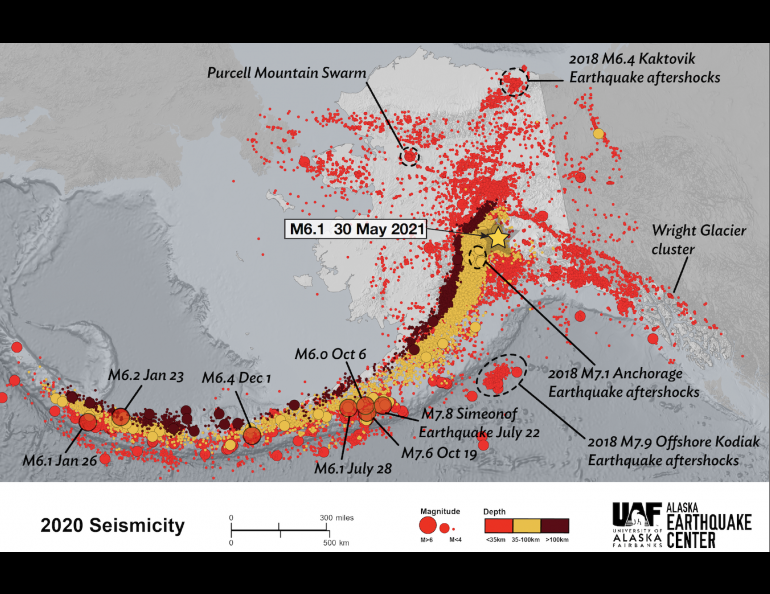
Recent and pre-1971 (1925–1970) seismicity indicates that the regions where aftershocks clustered remained active through time. This pattern is similar to aftershocks observed in the 2013 M w = 7.5 Craig, Alaska earthquake. Many of the northern aftershocks locate east of the Queen Charlotte fault. The relocations show two clusters of aftershocks along the Queen Charlotte fault, one ∼40 km north of the mainshock epicenter and the other just south of the mainshock, both regions adjacent to portions of the fault that experienced maximum moment release in 1972. However, we were able to scan paper copies of the phase data, convert the data to digital form, and successfully relocate 87 aftershocks. These locations were never published, and the original seismograms and digital phase data were misplaced.

ALASKA QUAKE EPICENTER PORTABLE
Geological Survey installed a network of portable seismographs that recorded over 200 aftershocks. Thus, understanding the controls on the rupture process of the 1972 mainshock is important for seismic hazard assessment in Alaska. The fault is one of the fastest moving transform boundaries in the world, having accumulated enough slip since 1972 to produce an event of comparable size in the near future.


The 1972 M w 7.6 Sitka earthquake is the largest historical event along the southeastern Alaska portion of the strike-slip Queen Charlotte fault, the transform boundary between the Pacific and North American plates.


 0 kommentar(er)
0 kommentar(er)
